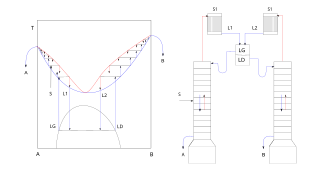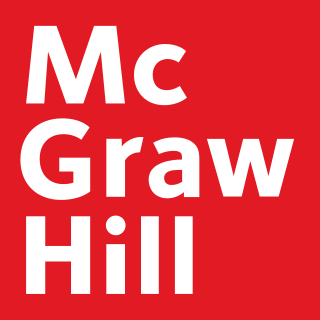
Chemical engineering is an engineering field which deals with the study of operation and design of chemical plants as well as methods of improving production. Chemical engineers develop economical commercial processes to convert raw materials into useful products. Chemical engineering uses principles of chemistry, physics, mathematics, biology, and economics to efficiently use, produce, design, transport and transform energy and materials. The work of chemical engineers can range from the utilization of nanotechnology and nanomaterials in the laboratory to large-scale industrial processes that convert chemicals, raw materials, living cells, microorganisms, and energy into useful forms and products. Chemical engineers are involved in many aspects of plant design and operation, including safety and hazard assessments, process design and analysis, modeling, control engineering, chemical reaction engineering, nuclear engineering, biological engineering, construction specification, and operating instructions.
Systems design interfaces, and data for an electronic control system to satisfy specified requirements. Systems design could be seen as the application of systems theory to product development. There is some overlap with the disciplines of systems analysis, systems architecture and systems engineering.

Environmental engineering is a professional engineering discipline related to environmental science. It encompasses broad scientific topics like chemistry, biology, ecology, geology, hydraulics, hydrology, microbiology, and mathematics to create solutions that will protect and also improve the health of living organisms and improve the quality of the environment. Environmental engineering is a sub-discipline of civil engineering and chemical engineering. While on the part of civil engineering, the Environmental Engineering is focused mainly on Sanitary Engineering.
The field of strength of materials typically refers to various methods of calculating the stresses and strains in structural members, such as beams, columns, and shafts. The methods employed to predict the response of a structure under loading and its susceptibility to various failure modes takes into account the properties of the materials such as its yield strength, ultimate strength, Young's modulus, and Poisson's ratio. In addition, the mechanical element's macroscopic properties such as its length, width, thickness, boundary constraints and abrupt changes in geometry such as holes are considered.
The McGraw-Hill Encyclopedia of Science & Technology is an English-language multivolume encyclopedia, specifically focused on scientific and technical subjects, and published by McGraw-Hill Education. The most recent edition in print is the eleventh edition, copyright 2012 (ISBN 9780071778343), comprising twenty volumes. The encyclopedia covers the life sciences and physical sciences, as well as engineering and technology topics.

Athanasios Papoulis was a Greek-American engineer and applied mathematician.

S&P Global Inc. is an American publicly traded corporation headquartered in Manhattan, New York City. Its primary areas of business are financial information and analytics. It is the parent company of S&P Global Ratings, S&P Global Market Intelligence, S&P Global Mobility, S&P Global Engineering Solutions, S&P Global Sustainable1, and S&P Global Commodity Insights, CRISIL, and is the majority owner of the S&P Dow Jones Indices joint venture. "S&P" is a shortening of "Standard and Poor's".

In chemistry, azeotropic distillation is any of a range of techniques used to break an azeotrope in distillation. In chemical engineering, azeotropic distillation usually refers to the specific technique of adding another component to generate a new, lower-boiling azeotrope that is heterogeneous, such as the example below with the addition of benzene to water and ethanol.

Effluent is wastewater from sewers or industrial outfalls that flows directly into surface waters, either untreated or after being treated at a facility. The term has slightly different meanings in certain contexts, and may contain various pollutants depending on the source.
In chemical engineering, process design is the choice and sequencing of units for desired physical and/or chemical transformation of materials. Process design is central to chemical engineering, and it can be considered to be the summit of that field, bringing together all of the field's components.

In electrical engineering, dot marking convention, or alphanumeric marking convention, or both, can be used to denote the same relative instantaneous polarity of two mutually inductive components such as between transformer windings. These markings may be found on transformer cases beside terminals, winding leads, nameplates, schematic and wiring diagrams.

Architectural Record is a US-based monthly magazine dedicated to architecture and interior design. Its editor in chief is Josephine Minutillo. The Record, as it is sometimes colloquially referred to, is widely-recognized as an important historical record of the unfolding debates in architectural practice, history and criticism in the 20th-century United States. The magazine is currently published by BNP Media. Throughout its 133 years in print, Architectural Record has engaged readership among architecture, engineering, and design professionals through articles showcasing noteworthy architectural projects around the world. News, commentary, criticism, and continuing-education sections outline the scope of content. Of note are the glossy, high-quality photos of featured projects, which give the magazine wider readership outside of just those working in the design professions.

The Engineering News-Record is an American weekly magazine that provides news, analysis, data and opinion for the construction industry worldwide. It is widely regarded as one of the construction industry's most authoritative publications and is considered by many to be the "bible" of the industry. It is owned by BNP Media.

In thermodynamics, vapor quality is the mass fraction in a saturated mixture that is vapor; in other words, saturated vapor has a "quality" of 100%, and saturated liquid has a "quality" of 0%. Vapor quality is an intensive property which can be used in conjunction with other independent intensive properties to specify the thermodynamic state of the working fluid of a thermodynamic system. It has no meaning for substances which are not saturated mixtures . Vapor quality is an important quantity during the adiabatic expansion step in various thermodynamic cycles. Working fluids can be classified by using the appearance of droplets in the vapor during the expansion step.
Potocytosis is a type of receptor-mediated endocytosis in which small molecules are transported across the plasma membrane of a cell. The molecules are transported by caveolae and are deposited directly into the cytosol.
Donald Glen Fink was an American electrical engineer, a pioneer in the development of radio navigation systems and television standards, vice president for research of Philco, president of the Institute of Radio Engineers, General Manager of the IEEE, and an editor of many important publications in electrical engineering.

Electronic engineering is a sub-discipline of electrical engineering that emerged in the early 20th century and is distinguished by the additional use of active components such as semiconductor devices to amplify and control electric current flow. Previously electrical engineering only used passive devices such as mechanical switches, resistors, inductors, and capacitors.

McGraw Hill is an American publishing company for educational content, software, and services for pre-K through postgraduate education. It is one of the "big three" educational publishers along with Houghton Mifflin Harcourt and Pearson Education. The company also publishes reference and trade publications for medicine, business, and engineering. Formerly a division of The McGraw Hill Companies, McGraw Hill Education was divested and acquired by Apollo Global Management in March 2013 for $2.4 billion. McGraw Hill was sold in 2021 to Platinum Equity for $4.5 billion.
Engineering Drawing by Thomas Ewing French (1871-1944), Mech. Eng., OSU 1895, also known as A Manual of Engineering Drawing for Students and Draftsman, was first published in 1911 by McGraw-Hill Book Company. It appeared in fourteen editions and was last published in 1993. The title and author remained the same through the first six editions. French died during the publication years of the Sixth Edition, so the Seventh Edition was revised by his colleague at Ohio State University, Charles J. Vierck. The Eighth through Tenth editions had the same title and were also authored by Charles J. Vierck. For the Eleventh and Twelfth editions, the book title changed to Engineering Drawing and Graphic Technology. Following the death of Vierck in 1980, the Thirteenth and Fourteenth Editions were additionally authored by Robert J. Foster, Penn State University.
Nevin Elwell Funk was an American electrical engineer, vice president engineering at the Philadelphia Electric Company, now PECO Energy Company. He is known as president of the American Institute of Electrical Engineers in 1943-44, and recipient of 1952 ASME Medal.











